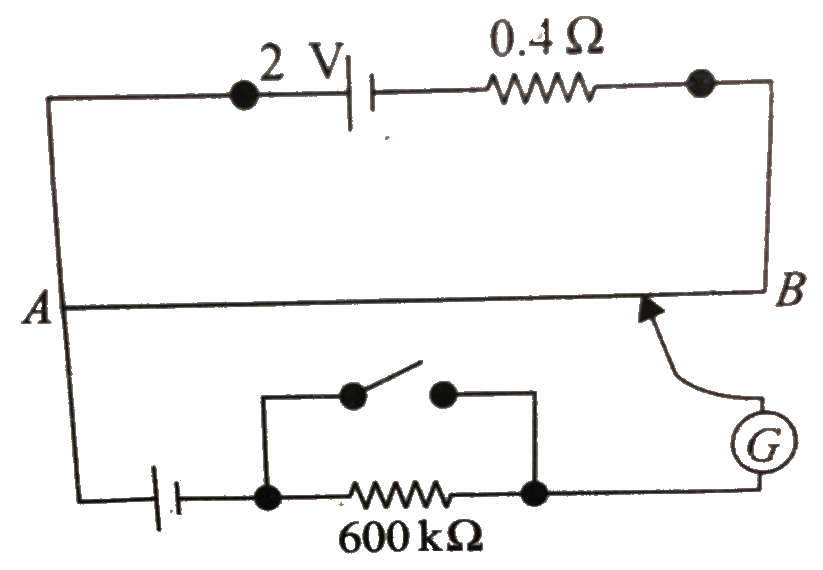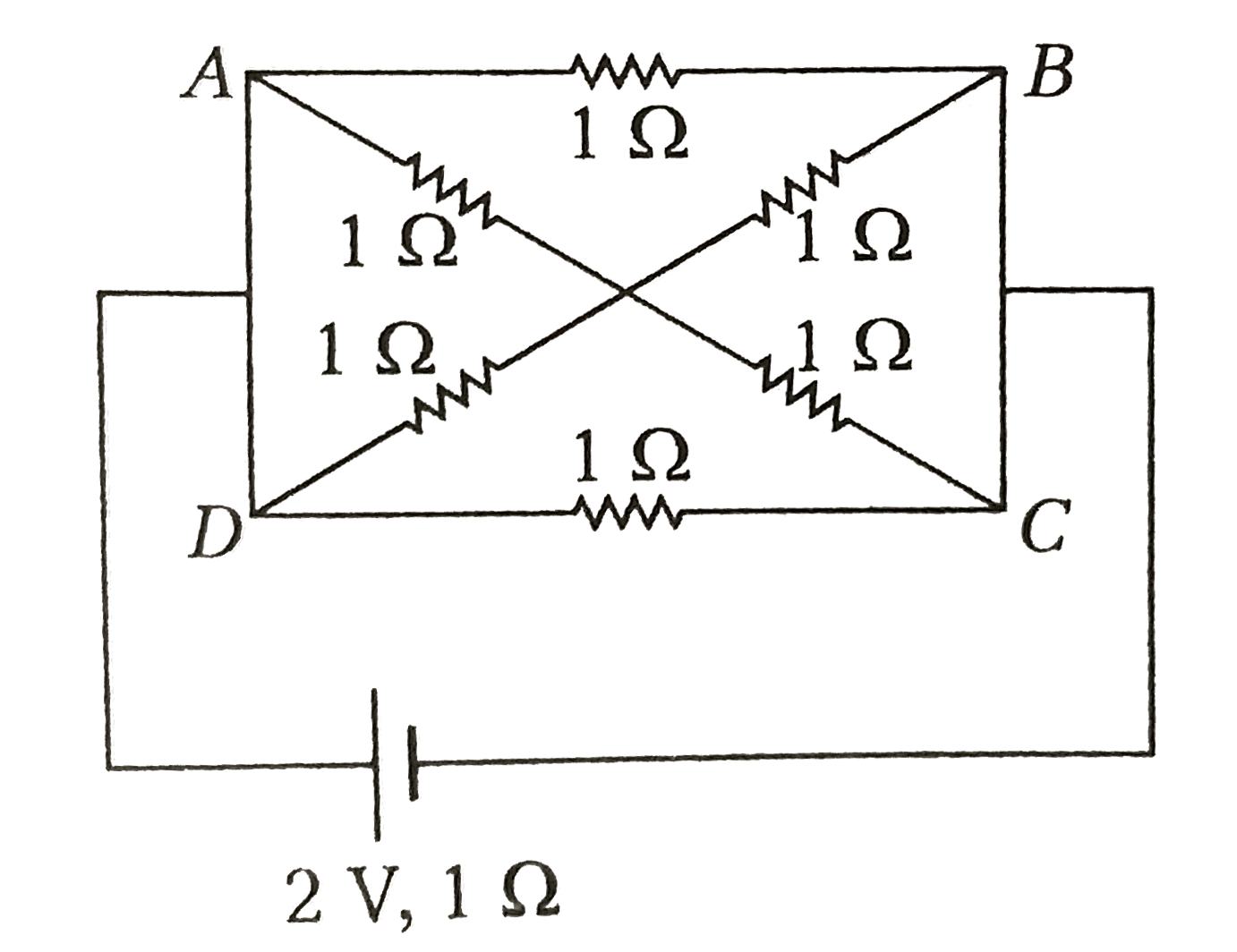Figure 6.36 shows a potentiometer with a cell of emf 2.0V and internal resistance 0.4Ω maintaining a potential drop across the resistor wire AB. A standard cell that maintains a constant emf of 1.02V (for very moderate current up to emf μA) gives a balance point at 67.3cm length of the wire. To ensure very low current is drawn the standard cell, a very high resistance of 600kΩ is put in series with it, which is shorted close to the balance point. The standard cell is then replaced by a cell of unknown emf ε and the balance point found, similary, turns out to be at 82.3cm length of the wire.
a. What is the value of ε?
b.What purpose does the high resistance of 600kΩ have?
c. Is the balance point affected by this high resistance?
d. Is the balance point affected by internal resistance of the driver cell?
e. Would the method work in the above situation if the driver cell of the potentiometer had an emf of 1.0V instead of 2.0V?
f. Would the circuit work well for determining an extermely small emf, say of the order of a few mV (such as the typical emf of a thermocouple)? If not, how will you modify the circuit ?

The correct Answer is:(a) 1.25 V,
(b) saving of glvanometer from damage and to prevant the cell discharging fast
( c) No, (d) Yes, ( e) No, (f) No
Step by step video & image solution for Figure 6.36 shows a potentiometer with a cell of emf 2.0 V and internal resistance 0.4 Omega maintaining a potential drop across the resistor wire AB. A standard cell that maintains a constant emf of 1.02 V (for very moderate current up to emf mu A) gives a balance point at 67.3 cm length of the wire. To ensure very low current is drawn the standard cell, a very high resistance of 600 k Omega is put in series with it, which is shorted close to the balance point. The standard cell is then replaced by a cell of unknown emf epsilon and the balance point found, similary, turns out to be at 82.3 cm length of the wire. a. What is the value of epsilon? b.What purpose does the high resistance of 600 k Omega have? c. Is the balance point affected by this high resistance? d. Is the balance point affected by internal resistance of the driver cell? e. Would the method work in the above situation if the driver cell of the potentiometer had an emf of 1.0 V instead of 2.0 V? f. Would the circuit work well for determining an extermely small emf, say of the order of a few mV (such as the typical emf of a thermocouple)? If not, how will you modify the circuit ? by Physics experts to help you in doubts & scoring excellent marks in Class 12 exams.
Updated on:21/07/2023Topper's Solved these Questions
- CURRENT ELECTRICITYBOOK - RESONANCE ENGLISHCHAPTER - CURRENT ELECTRICITYEXERCISE - Exercise-1 (Part-2)
47 Videos
- CURRENT ELECTRICITYBOOK - RESONANCE ENGLISHCHAPTER - CURRENT ELECTRICITYEXERCISE - Exercise-1 (Part-3)
2 Videos
- CURRENT ELECTRICITYBOOK - RESONANCE ENGLISHCHAPTER - CURRENT ELECTRICITYEXERCISE - Solued miscellaneous Prolblems
8 Videos
- COMMUNICATION SYSTEMSBOOK - RESONANCE ENGLISHCHAPTER - COMMUNICATION SYSTEMSEXERCISE - Exercise 3
13 Videos
- DAILY PRACTICE PROBLEMBOOK - RESONANCE ENGLISHCHAPTER - DAILY PRACTICE PROBLEMEXERCISE - DPP.No.71
1 Videos
Similar Questions
Maximum current produced by a cell of emf 10 V and internal resistance 2Ω is
View SolutionA potentiometer with a cell of EMF 2V and internal resistance 0.4Ω is used across the wire AB. A standard cadmium cell of EMF 1.02V gives a balance point at 66cm length of wire. The standard cell is then replaced by a cell of unknows EMF e (internal resistance r), and the balance. Point found similarly turns out to be 88cm length of the wire. The length of potentiometer wire AB is 1m.
The value of e is
View SolutionFind the current drawn from a cell of emf 2 V and internal resistance 2Ω connected to the network given below.

View SolutionIn a potentiometer arrangement a cell of emf 1.5 V gives a balance point at 30 cm length of wire. Now, when the cell is replaced by another celle , the balance point shifts to 50 cm. What is the emf of second cell ?
View SolutionIn order to determine the internal resistance of a primary cell by means of potentiometer the emf of the battery connected across the ends of the potentiometer wire should be
View Solutionis made of uniform material and cross-sectional area, and it has uniform resistance per unit length. The potential gradient depends upon the current in the wire.
A potentiometer with a cell of emf 2V and internal resistance 0.4Ω is used across the wire AB. A standard cadmium cell of emf 1.02V gives a balance point at 66cm length of wire. The standard cell is then replaced by a cell of unknows emf e (internal resistance r), and the balance. Point found similarly turns out to be 88cm length of the wire. The length of potentiometer wire AB is 1m.
The reading of the potentiometer, if a 4V battery is used instead of e is
View SolutionIn a potentiometer arrangement, a cell of emf 1.5 V gives a balance point at 27 cm length of wire. If the cell is replaced by another cell and balance point shifts to 54 cm, the emf of the second cell is :
View SolutionA potentiometer consists of a wire of length 4 m and resistance 10Ω. It is connected to a cell of emf 2V.The potential gradient of the wire is
View SolutionIn a potentiometer arrangement, a cell of emf 1.25 V gives a balance point at 35.0 cm length of the wire. If the cell is replaced by another cell and the balance point shifts to 63.0 cm, what is the emf of the second cell ?
View SolutionIn a potentiometer arrangement, a cell of emf 2.25V gives a balance point at 30.0 cm length of the wire. If the cell is replaced by another cell and the balance point shifts to 60.0 cm, then what is the emf of the second cell?
View Solution
